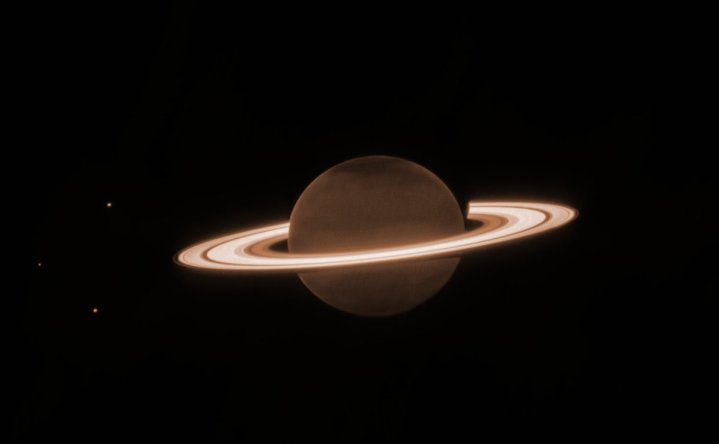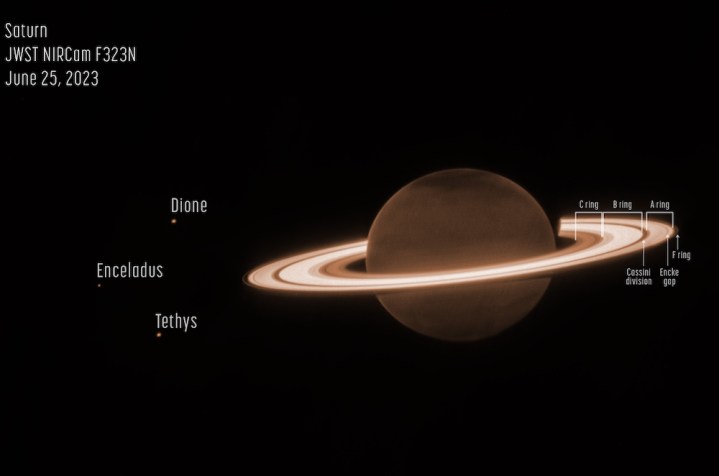
NASA has shared a gorgeous image of Saturn captured recently by the James Webb Space Telescope (JWST).
Webb’s first near-infrared observations of the second largest planet in our solar system also show several of Saturn’s moons: Dione, Enceladus, and Tethys.

In the image, Saturn itself appears darker than you might expect, but that’s because of the infrared wavelength being used to observe the celestial body, as methane gas absorbs almost all of the sunlight falling on the atmosphere.
Saturn’s icy rings, on the other hand, lack methane and so really stand out, giving us an unusual view of the sixth planet from the sun.
Webb turned its attention to Saturn as part of an exercise to test the space telescope’s potential for detecting faint moons around the planet and its bright rings.
“Any newly discovered moons could help scientists put together a more complete picture of the current system of Saturn, as well as its past,” NASA said.
The early results are promising, with plenty of detail captured within Saturn’s ring system.
NASA said that even deeper exposures will enable researchers to better analyze some of Saturn’s fainter rings, which comprise rocky and icy fragments that range in size “from smaller than a grain of sand to a few as large as mountains on Earth.”
Over the past few decades, Saturn has been observed by other missions such as NASA’s Pioneer 11, Voyager 1 and Voyager 2, the Cassini spacecraft, and the Hubble Space Telescope. But using its near-infrared camera, the powerful Webb telescope, which started sending back stunning images of deep space last year, offers researchers an excellent chance to deepen their understanding of the planet and perhaps discover new features and characteristics over the coming years.
“We are very pleased to see JWST produce this beautiful image, which is confirmation that our deeper scientific data also turned out well,” Dr. Matthew Tiscareno, a senior research scientist at the SETI Institute who led the process of designing this observation, said in a statement. “We look forward to digging into the deep exposures to see what discoveries may await.”
Did you know you can even see Saturn with the naked eye? These excellent astronomy apps show you how.
Editors’ Recommendations
Credit: Source link


Comments are closed.